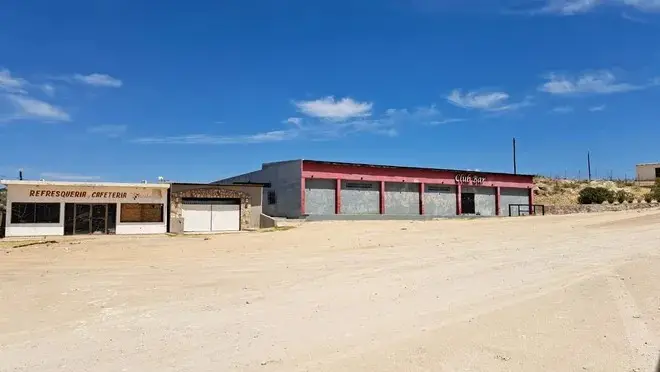
Ten months ago, violence erupted between warring criminal groups in the quiet, dusty border town of Sasabe, Sonora, and more than 2,000 people were displaced and fear more violence in the future.
On the day in October that the violence began, trucks full of people were seen circulating in the area. Residents told volunteers from Arizona that the situation in Sasabe was uneasy. The violence began on October 21 and escalated in November, as the groups fought for control of the area, a critical corridor for smuggling people, drugs and weapons. In December, as the violence subsided, some residents began to return, but most others remain displaced, either in Mexico or the United States.
Despite the violence, migrants continue to travel to the region and find new routes nearby to cross into the United States.
Evidence of gunfire is seen throughout the town. On the wall of one bar, passersby will see bullet holes filled in, while the entrance to a soft drink shop next door has broken and boarded up windows.
“From December until now it has been a terror,” said Dora Rodriguez, founder of the nonprofit Salvavision, which operated a resource center called Casa de la Esperanza. Since violence rocked the city, the center closed its doors, prompting Salvavision to shift its focus to helping 50 displaced families pay for housing, food, work permits and legal fees.
Gail Kocourek, a volunteer with Tucson Samaritans and co-founder of Casa de la Esperanza, visits Sasabe weekly to feed dogs left behind when people fled the city. She recalled a man who lost his ranch after cartel members took all of his animals.
Kocourek said some of the people who fled to the United States knew they would likely be jailed if they entered the country, but took the risk to get their families to safety.
A street with buildings that have evidence of gunfire in Sasabe, Sonora.
Rodríguez recalled a man who was arrested. He spent seven months incarcerated in Florence fighting his case before being deported. His wife and children, however, were allowed to stay and fight their asylum case in Tucson. He told Rodriguez that he had to pay a fee and ask the cartel for permission to return home.
In the city, although daily life is still affected by the recent violence, things are starting to return to normal. Elementary and high schools remain closed and plan to reopen soon, and stores, which closed at 5 p.m. until March, now stay open until 8 p.m. However, abandoned pets remain stranded.
The city had between 1,500 and 2,500 residents before the violence began. An estimated 200 people have returned and traffic is picking up at the port of entry, Kocourek explained, noting that he saw children playing in the street recently, which he called a positive sign.
“When you start seeing people walking and kids playing in the streets, to me that’s a sign that things are starting to try to get back to normal,” Kocourek described.
Rodriguez noted that migrants from other countries and continents crossing Mexico into the United States have been caught in the crossfire. In one case, a group of several hundred migrants from Africa traveling to the United States to seek asylum found themselves abandoned by smugglers in the region due to cartel violence.
Immigration has changed since the violence, and now people are crossing into the United States farther from Sasabe, in an area where the border wall between Sasabe and Nogales ends, according to nonprofits in the area.
“We are seeing an average of 60 to 70 migrants a day,” said Belén Ramírez, a family doctor who works as a project coordinator for Doctors Without Borders, which recently began providing services near the new crossing. The organization will remain in the area to care for migrants at least through September. Volunteers with the organization provide medical aid and general support to migrants arriving in the United States, treating their medical and mental health needs.
It has been months since Kocourek received reports of gunfire, and a tentative peace is settling in quiet, dusty Sasabe. Still, residents fear what might happen next.
“We’ll see. Everything could change tomorrow,” Kocourek said.
Source: azcentral






